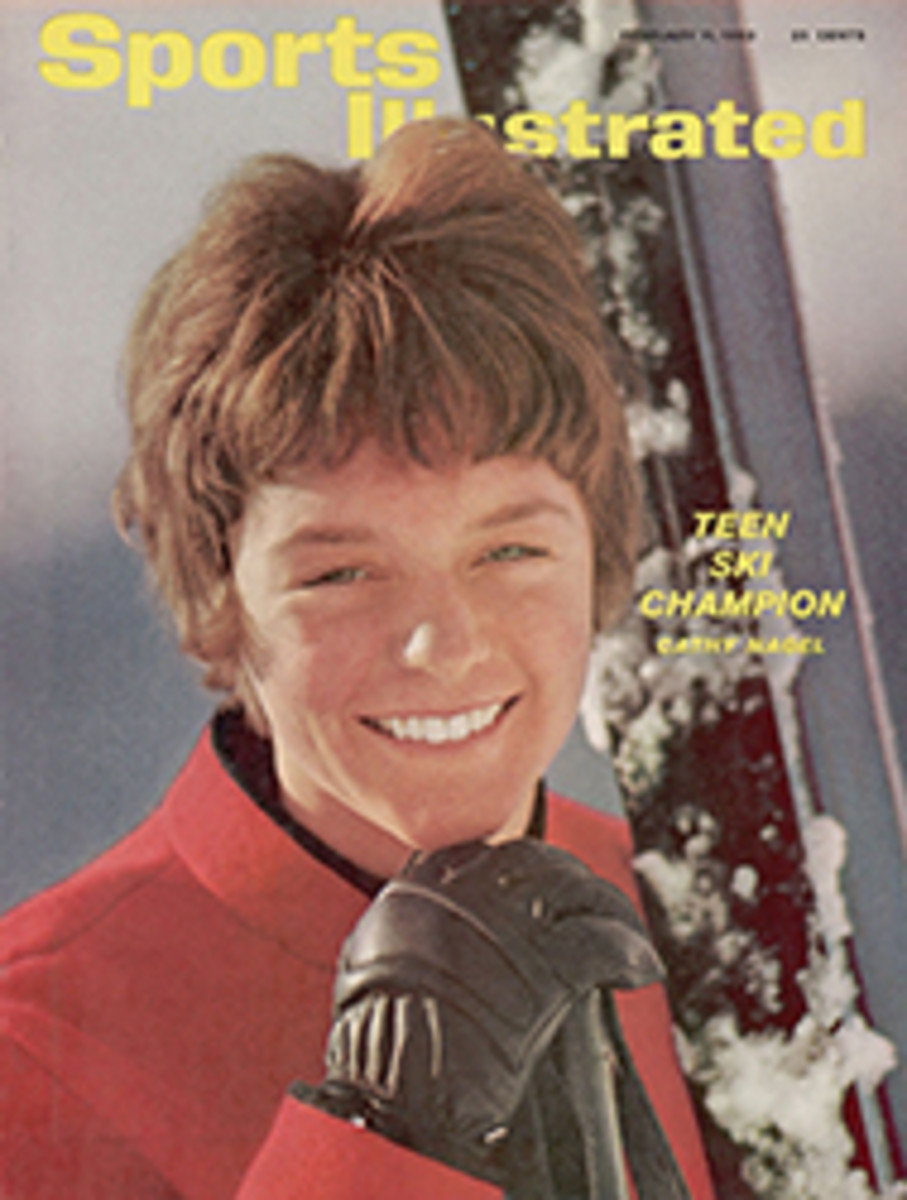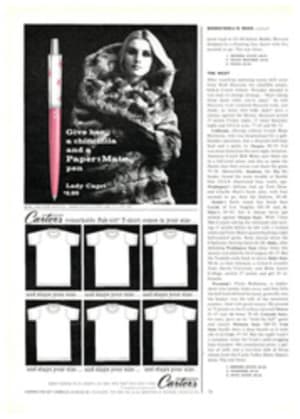
The big blow and the Blue Pig
For 25 of the 27 becalmed blue-water yachts drifting listlessly over the line at the 403-mile St. Petersburg-Fort Lauderdale ocean race last week, it was the start of the premier event of the Southern Ocean Racing Conference. But for two big invaders from California, Sally Ames Langmuir's 72-foot 6-inch white-hulled yawl Bolero and Baldwin M. Baldwin's dark-blue-hulled 73-foot yawl Escapade, it was a match race, plain and simple. The two boats were old West Coast rivals, as closely matched as a one-design class. In the Los Angeles-Mazatlan race last November, for instance, after more than 800 miles of open ocean, they crossed tacks within two boat lengths of each other. Moreover, in Florida, in the first two SORC races this winter, they took turns handing the locals some swift, certain sailing lessons: Escapade swept the Venice Race, Bolero swept the Cat Cay Race. As an eastern newcomer lucky enough to be crewing on Bolero, I was quickly informed that winning a race meant much less than beating the tar out of "that Blue Pig" from California.
For five long hours after the dead-calm start Escapade drifted beside her rival, her giant spinnaker with the Maltese cross sagging like a punctured balloon. On Bolero one crewman dropped matches, with mechanical repetition, onto the water, searching for a clue of wind in the flame's brief puff of smoke. The smoke went straight up. "Are we moving," he asked, "or is the water moving under us?" Twice Bolero dropped anchor to keep from backsliding on the incoming tide. Three times we set her spinnaker; three times it came down. But Escapade was even more beset. By late afternoon she was lost in the fog behind us. At 11 the wind picked up some. We were moving—six knots maybe—but it seemed a breakneck speed, and all that watch we huddled amidships in the red glow spilling out on the fog from the chart table below. Heavy dew wetted the decks, and Peter Bowker, a sturdy Englishman who has spent his life at sea, muttered, "Soggy night, what?" It was a very English night.
The next day the weather cleared and the wind freshened. At 3 a.m., an hour before my watch, I woke with a start to a cry from above: "Jibe!" Those of us who were off watch tumbled from our bunks and scrambled on deck. The wind had built up to 20 miles an hour. We were dead before it, and Bolero had begun to charge. Just before 5 the wind shifted, and we dropped the spinnaker. In its place went a reaching jib, its sheet led through a block on the boom and down to a winch through another block snapped to an eye which slid back and forth on the rail. Suddenly the wind tore the holding screw from the eye, slammed it back along its track and bent a lifeline stanchion almost to the deck. "Give us a luff," someone cried as the stanchion threatened to snap completely. Bowker, then on the helm, turned Bolero up into the wind to spill air from the sail.
One crewman was curled up on the foredeck, calling the trim of the sails with the aid of a flashlight beam. "You're luffing," his voice informed us placidly over a small hand mike. "You're luffing." "Shut up, damn it," Bowker shouted from the wheel. "We know bloody well we're luffing." His words were lost on the wind. Then, like a rifle shot in the rush of air and water, the block on the boom exploded under the strain and a tennis court of sail went off in the wind. "Take it down," Bowker yelled. "Get the bloody sail down." Someone let go the halyard. Another, a powerful former professional football player, took the sheet in his hands and put his back to the wind. The rest of us dived to the leeward rail to hand in the sail as it came down. Water raced over our feet. In came the sail, and up went the No. 1 genoa. It bloomed open, and the rail went down in the rushing sea.
In the middle
Winds were up to 25 to 30 out of the north when Bolero reached the Gulf Stream. Bob Fisher, my crewmate amidships and an old hand at sailing the Stream, remarked. "Think this is bad now? Wait'll we get in the middle of it." By one o'clock gusts up to 40 were tearing at the sails. Seas up to 10 feet from trough to crest crashed now on one bow, now on the other. Bolero bucked, pitched like a wild horse and heeled over. We doused the genoa, reefed the mainsail, and Bolero smashed through the sea under short sail at 9½ knots.
Exhausted, soaked through, we sank back on the weather rail and looked about us. Way off, hull down below the horizon, sails billowing and charging—a wondrous sight!—was the Blue Pig, as beautiful as she was unwelcome. More than 300 miles of open ocean, a complete circle of winds, and Escapade was closing on us! A master sailor named Jimmy Jones was at our helm. Jones had flown to St. Petersburg from California at Sally Langmuir's request the night before the race; he had joined the boat not 20 minutes before the first gun. Now he was driving Bolero for all she was worth, but even that was not enough.
A day later, when the timers had finished their arithmetic, a 39-foot Class C yawl named Doubloon, with almost 16 hours' handicap, sailed off with first place on corrected time. Bolero was reduced to fourth in Class A, 15th in the fleet. But for those of us on board Bolero the only time that mattered was the 93 seconds between our bow and the stern of Escapade as the big Blue Pig charged across the finish line.
PHOTO
"ESCAPADE'S" SPINNAKER HANGS FORLORNLY AT START OF RACE WITH "BOLERO"

